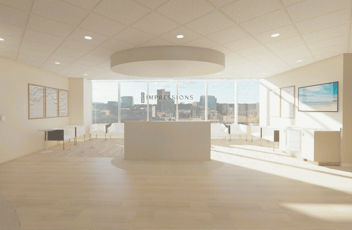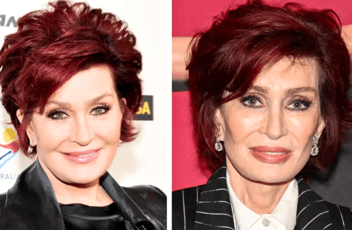
Ethnic rhinoplasty is a specialized cosmetic procedure designed to enhance the aesthetics of the nose while preserving the patient's cultural identity. Unlike traditional rhinoplasty, which often aims to create a more generic nasal appearance, rhinoplasty for diverse ethnicities focuses on refining and enhancing the natural features that define various ethnic groups. This procedure is not about changing one's ethnicity but rather about embracing and enhancing it.
The Importance of Ethnic Considerations
The concept of ethnic rhinoplasty varies greatly depending on perspective and region. What is considered an ethnic rhinoplasty in Chicago may differ from that in Los Angeles or Miami. For example, Dr. Dayan was in Tokyo and Seoul discussing his techniques for Asian rhinoplasty. When his colleagues asked about ethnic rhinoplasty, they were referring to a Caucasian nose.
Cosmetic rhinoplasty has its roots in the early part of the 20th century and began as an operation that would allow someone to hide their ethnicity. It was an operation popularized in Germany by Dr. Jacques Joseph for Middle Eastern, Eastern European and Russian descendants who wanted a more German looking nose.
The operation quickly caught on in America when pioneering and forward thinking American surgeons including Dr. Dayan’s great uncle Sam Fomon, went to learn from Dr. Joseph. They brought back this curious image altering procedure, and it gained popularity in NYC especially among the Irish and Jewish immigrants wanting to appear more American. The “American nose” was a shorter scooped out tiny tip nose typified by Twiggy, the American iconic star of the 50’s.
The goal was still to hide one’s ethnicity.
However, America started to change as many more immigrants moved to this country and the appearance of what is beautiful also changed. Beauty in a population is defined by what is the average of all the people in that group. So as America absorbed more peoples from Africa, South America and Asia our definition of what is beautiful also migrated. Today what is beautiful is no longer a turned up nose, wide open eyes or well defined lips rather it is fuller eyes (Natalia Dyer), a button nose (Jenna Ortega) and fuller lips (Angelina Jolie). Our goal today is rather to create a more symmetric nose that blends with the average of society but still allows for identity of one’s original ethnic roots.
Dr. Dayan notes that it is uncommon for a person to ask for a race-changing nose today although on occasion it happens. Most patients just want their nose, but better, one they can feel proud of whether at their family reunion or at their multicultural college campus. The aesthetics of the nose do vary based on region and culture, so it is critically important to be very sensitive and understand the goals of each individual’s cultural preservation.
Specialized Procedures in Ethnic Rhinoplasty
Ethnic nasal refinement involves several specialized procedures to achieve the desired look:
- Alar Base Reduction: Reducing the width of the nostrils to create a more balanced nasal appearance.
- Tip Refinement: Enhancing the definition and projection of the nasal tip while maintaining natural ethnic characteristics.
- Bridge Augmentation: Using cartilage grafts or implants to raise the nasal bridge, particularly common in patients with a lower dorsum.
Patients of African, Hispanic and Asian descent tend to have thicker skin, wider nasal bases, limited caudal septal support and a lower dorsum (bridge). A common request is a higher bridge (dorsum), narrowed tip and narrowed nostril base. However the techniques that would achieve such results in a Caucasian nose are completely different for an ethnic nose.
The bridge while appearing wide will not be narrowed by breaking the nose, (lateral osteotomies) rather the bridge has to be augmented. In Asia, foreign body grafts such as silastic implants and fillers are popular.
In the United States, however, these are less popular as we tend to be concerned about the infection and rejection rates associated with these products. We tend to use cartilage and soft tissue materials that come from the patient’s nose, ear or rib. Therefore there is no chance for rejection. Yes it does take more time but in the long run it may be a better solution.
Because the “ethnic” nose tends to have thicker skin and is at higher risk for swelling and scarring, a closed rhinoplasty, an approach of which Dr. Dayan is known all over the world for, with all incisions hidden on the inside of the nose is particularly favored and beneficial.
Nothing could be worse than a nicely shaped nose ruined by a horrible scar on the columellar (skin between the nostrils). Additionally keeping swelling to a minimum is essential. Excess swelling can lead to permanent changes in the nose such as poly beak formation (nose looks like a parrot beak). Dr. Dayan’s opinion is that the closed approach with less surgical dissection and quicker operative times is very important to reducing the risk for post operative swelling.
For those hesitant about surgery, liquid rhinoplasty offers a non-surgical alternative. This procedure uses dermal fillers to temporarily alter the shape of the nose, providing a less invasive option for minor corrections.
Additionally, patients seeking a harmonious facial appearance often consider blepharoplasty (eyelid surgery) in conjunction with rhinoplasty. Adjustments to both the nose and eyes can enhance overall facial symmetry, creating a balanced transformation that respects ethnic features.
Ethnic Rhinoplasty Cost
The cost of ethnic rhinoplasty varies depending on factors such as the surgeon's expertise and the complexity of the procedure. It is essential for patients to obtain personalized quotes to understand the full financial scope before proceeding.
How to Choose Your Ethnic Rhinoplasty Surgeon
Selecting the right surgeon is critical for a successful ethnic rhinoplasty. Look for a surgeon with specific expertise in ethnic rhinoplasty and experience with diverse facial features. Understanding cultural aesthetics and having a portfolio of past work with similar patients are essential factors to consider. Ask about the surgeon’s philosophy on ethnic rhinoplasty and view before-and-after photos of previous patients.
Dr. Dayan’s first 5 years of performing rhinoplasty were on patients of African American and Asian descent. Over the last ten years, he has gained enormous experience operating on such noses and has developed unique techniques to preserve ethnicity and keep the procedure a secret. It seems especially important for his patients who are in the media spotlight whose career could be ruined if the fact they had a rhinoplasty became public.
Recovery Insights: What to Expect After Ethnic Rhinoplasty
Recovery from ethnic rhinoplasty involves several key phases:
- Immediate Care: Follow your surgeon's instructions for post-operative care to minimize swelling and discomfort. Using a closed rhinoplasty approach with incisions hidden inside the nose can reduce scarring and swelling.
- Recovery Timeline: Initial swelling and bruising may subside within a few weeks, but full recovery can take several months. Minimizing swelling is crucial as excess swelling can lead to permanent changes, such as poly beak formation.
- Follow-Up Consultations: Regular check-ins with your surgeon ensure proper healing and address any concerns. Surgeons often use specialized techniques, medications, and stitches during surgery to reduce swelling and promote better outcomes.
What makes ethnic rhinoplasty different from traditional rhinoplasty?
Ethnic rhinoplasty focuses on preserving and enhancing ethnic features, unlike traditional rhinoplasty, which often aims for a more standardized nasal appearance.
What are the common modifications made during ethnic rhinoplasty?
Common modifications include alar base reduction, tip refinement, and bridge augmentation, tailored to the patient's ethnic characteristics.
Will my nose still look natural after ethnic rhinoplasty?
Yes, the goal is to enhance your natural features while maintaining a look that is harmonious with your ethnic background.
Book Your Consultation At Impressions Face + Body
Ethnic rhinoplasty combines the dual goals of enhancing facial aesthetics and respecting cultural identities. This procedure can significantly impact self-esteem and personal identity by creating a more harmonious and natural appearance. If you're considering ethnic rhinoplasty, reach out to Impressions Face + Body to discuss your unique path towards facial enhancement. Feel informed and inspired to take the next step in your journey.
Read On


Demystifying “GLP1 Face”
Demystifying “GLP Face”: What Happens to Your Face WhenYou Lose Weight Fast?

Introducing Our Comprehensive GLP-1 Weight Loss Program in Chicago | Impressions Face + Body
If you’re on a GLP-1 medication for weight loss—or considering it—you’re already taking an...

